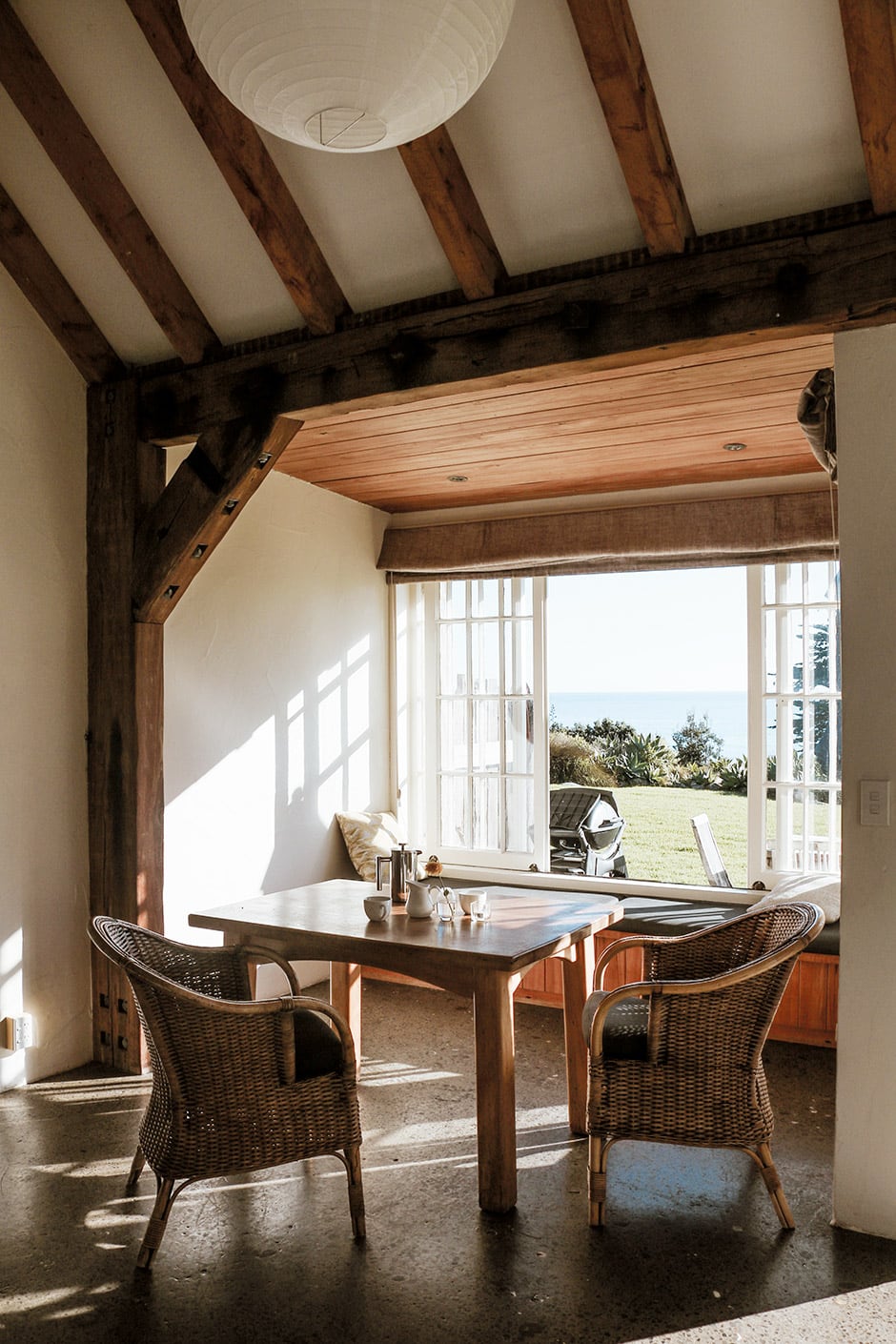The moment you arrive at Taranaki’s Ahu Ahu Beach Villas, you feel a sense of familiarity, of comfort. Stepping onto their concrete floors with inlaid shell and driftwood detail, running your hand over their plaster walls and timber benchtops, or tilting your gaze towards their weathered wharf-piles-turned-structural-beams, each of the four warm and tranquil dwellings greets you like an old friend. It’s a feeling matched by their owners Nuala and David Marshall’s hospitality and genuine excitement about sharing their slice of coastal Ōakura with you.


David, how did you decide on the look for the villas? During our travels in Europe, Nuala and I stayed in some beautifully timeless homes and historical buildings built from natural, local materials in Wales, Italy, France and Spain that left a lasting impression on us. We were also inspired by the late New Zealand architect James Walter Chapman-Taylor, who built a number of European-style, handcrafted buildings here in Taranaki. Friends of ours owned a house he designed, dubbed ‘The Castle’, and staying there influenced us too.
The villas have won several awards since they were completed in 2000, including one for sustainable architecture from the New Zealand Institute of Architects — who were the architects on this project? Boon Goldsmith, with Alan Reed doing the bulk of the work, along with engineer Russell Nagel. It was their challenge to assemble all of our ideas, influences and elements in an appropriate manner on our wonderful coastal headland.

The villas are made almost entirely of recycled materials — can you tell us a bit about the construction process? Channelling James’s use of local materials, we decided to take an unconventional approach: first gather materials, then design. It was a bit of a jigsaw puzzle — we didn’t find the pieces to fit the design, we made the design fit the pieces.
By upcycling materials from old buildings and sites around New Zealand, a sort of reincarnation occurred. Over a number of years, we sourced timber locally from Taranaki and Nelson, including from an old community hall, and we also cut some from our own property’s cliffs and milled it right here.
By far the most fruitful source of materials and treasures was the old Stratford hospital, on the opposite side of Mount Taranaki. It was due for demolition, so I marked the pieces that interested me, then took a team back to help gather them. We brought home heaps of native timber and American Oregon pine; copper spouting and ventilation domes, cast-iron downpipes and rainheads, beautiful windows and doors, door handles, taps and to top it off, 13,000 100-year-old French Marseille-style clay roof tiles. This seemingly random assortment of materials later took shape to become something truly unique.


You also have a lodge, Oraukawa, on the property — how did that come about? Hosting smaller groups and conferences, the lodge emulates the character of the villas, but with a modern, functional twist. The challenge for the lodge was not to obscure the panoramic view that makes the villas so special, so Alan, Russell and I took an engineering focus to the design: by building down into the ground rather than up, with a flat-roof concept, we were able not only to conserve the villas’ view but also duplicate that same visual spectacle for those who use the lodge.
The structure is mainly concrete with a handful of recycled elements. With a large lounge, an industrial-style kitchen, two bedrooms and ample courtyard space for large gatherings, it’s proven to be a popular multipurpose venue.


Organic gardening, boating, surfing… your lifestyle here is quite something. What can guests expect? The sunrise and early-morning swims are special; the middle of the day is for finding a spot in which to bask in the sun and read; and nighttime is for watching the moon rise, telling stories by the fire and looking out for shooting stars. We love to catch some fish, pick some veges and share meals with guests or friends on the clifftop. We also like to share our local knowledge to point guests in the right direction, so they get the best out of their Taranaki experience.
ahu.co.nz
Interview Sarah Norris
Photography Trelise von Sturmer

